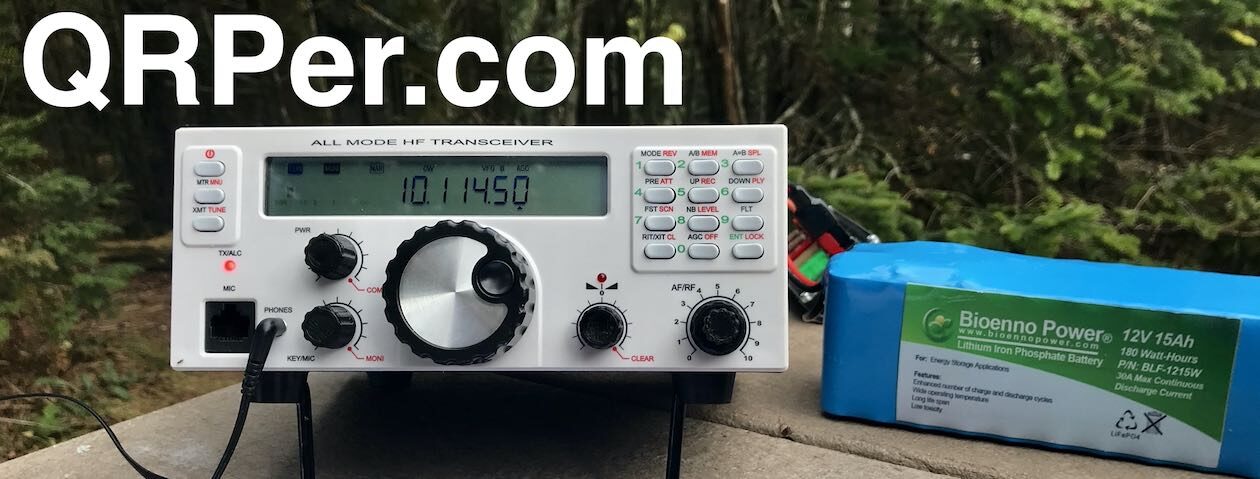 Yesterday, I posted the photo above on Twitter.
Yesterday, I posted the photo above on Twitter.
I couldn’t help it: I’m not an “Instagram Moment” kind of guy, but the fall leaf colors this year have simply been stellar. Any excuse.

Where was I? Oh yes…
Truth is, I was in the front yard practicing my loop tuning skills by hunting parks across 30, 20, and 17 meters.
The loop is the excellent Chameleon F-Loop 2.0 (which has since been replaced by Chameleon with the 3.0 version).
 I’ve used this loop a few times in the field and even once from inside a large brick community building while doing an FT8 demo.
I’ve used this loop a few times in the field and even once from inside a large brick community building while doing an FT8 demo.
Loops are a brilliant solution when you have:
- QRM from local noise sources,
- limited space to deploy an antenna,
- or need a very low-impact and small footprint antenna (very handy for those historic and archeological POTA sites).
The trade-off, of course, is that they have a high “Q”–meaning very, very narrow bandwidth. Basically, anytime you move frequency? Yeah, it’s time to re-tune.
The environment around a loop can also have a pretty significant impact on your ability to tune it as well. For example, metal support structure in a building, window frames, metal poles, vehicles–anything like this nearby can have an impact on your ability to tune a loop and obtain a low SWR.
It’s for this reason I use them so little in the field–where I live, wire antennas are so easy to deploy and use.
But sometimes loops are the perfect tool, so knowing how to efficiently and effectively use them is important.
The F-Loop packed
I thought I had posted an activation video using the F-Loop, but looking back I realize I have not.

Yesterday, I decided to pack the F-Loop in my larger Spec-Ops Brand T.H.E. Pack which can easily hold the entire loop, folding tripod, and antenna analyzer.

I always fully set up an antenna before packing it in a new pack just to make sure I’ve included all components. I used this as an excuse to improve my loop tuning skills by intentionally chasing POTA stations across the HF bands. I worked all of the stations I hunted (five, if memory serves).

Twice I obtained a brilliant match just by using my ear (listening for the HF band noise level to increase as I tuned the variable cap) and the rest of the time I turned to my RigExpert handheld analyzer to find a low SWR.

I’m looking forward to taking the F-Loop to the field soon just to see how well it performs. After my practice today, I do believe I’ll keep the antenna analyzer packed with the loop–it makes it so easy to find a good match.
I find the F-Loop a wee bit easier to tune than my W4OP loop. The W4OP loop is also a brilliant loop if you can find one–I recently gifted mine to a friend. Here’s my review from a few years ago.
I’ve used an AlexLoop once and was impressed as well. That’s another antenna I may review at some point.
Commercially-produced mag loops are pretty expensive though. I do plan to build a 20M mag loop antenna before end of year. They’re surprisingly easy to build if you have a good variable cap.
Curious how many of you regularly use mag loop antennas. If you do, what make and model? Or is your loop homebrewed? Please comment!
 Many thanks to Jonathan (KN6LFB) who shares the following in reply to my recent post about tuning mag loop antennas:
Many thanks to Jonathan (KN6LFB) who shares the following in reply to my recent post about tuning mag loop antennas:











